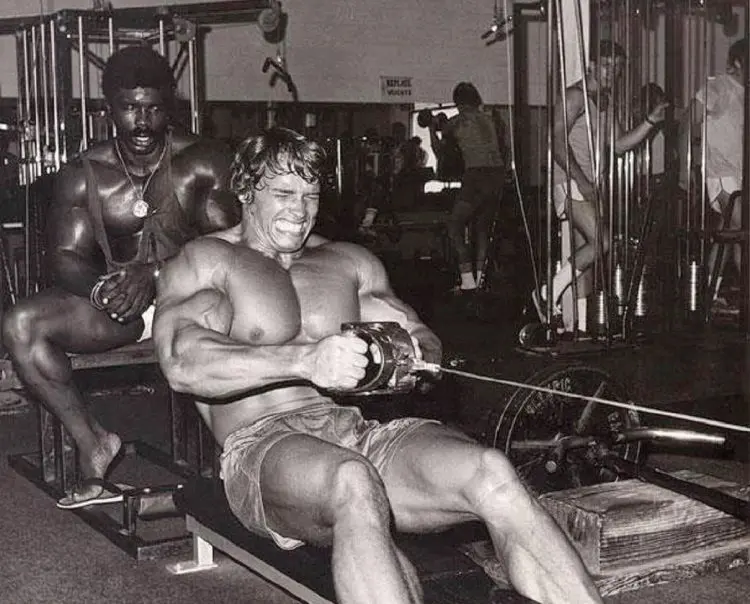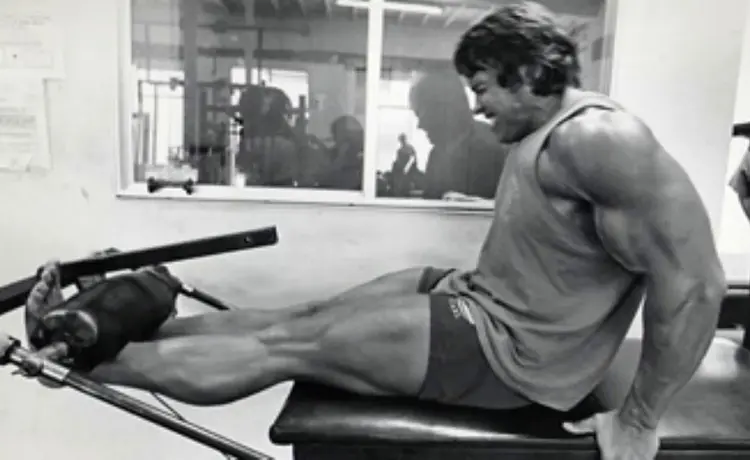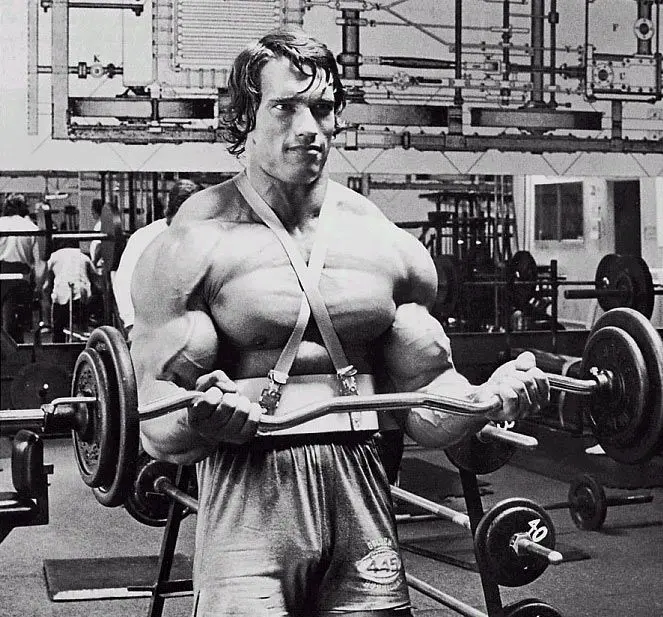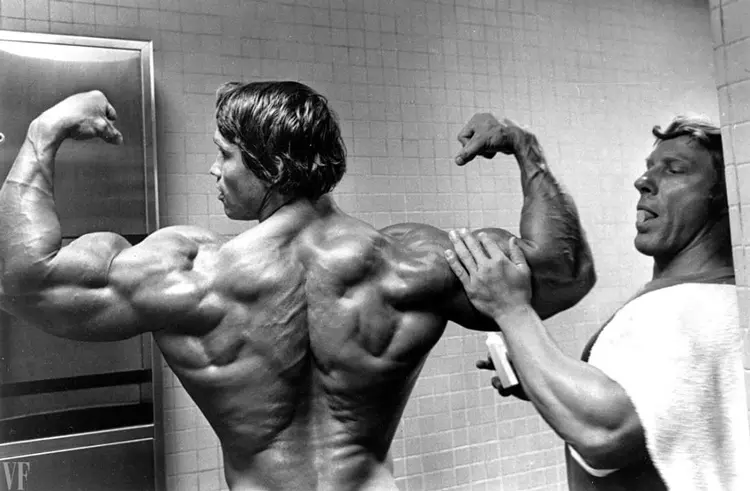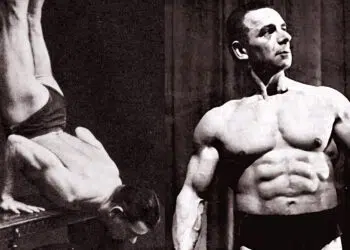While you COULD just walk into the gym and make up your workout on the spot, you’ll get much better results if you follow a well-designed program. You can write your own, or you could follow one written for you, such as the One Lift A Day (OLAD) workout, Layne Norton’s PHAT program, or our very own Strength Sports workout.
Each one is tried, tested and should give you the results you want.
However, arguably the biggest decision you’re going to have to make is between full-body and split workouts. This choice will determine the entire structure of your training week.
Many people believe that full-body workouts are best left to beginners, and that split routines are better for bodybuilding, but that’s a massive oversimplification.
In this article, we reveal the pros and cons of both types of training so that you can make a more informed decision.
What Is A Full-Body Workout?
Level Up Your Fitness: Join our 💪 strong community in Fitness Volt Newsletter. Get daily inspiration, expert-backed workouts, nutrition tips, the latest in strength sports, and the support you need to reach your goals. Subscribe for free!
As the name implies, a full-body program involves training all of your major muscles each time you work out. Usually, this means doing 1-2 exercises per body part and 2-4 sets of each exercise.
Most of your time will be spent on compound exercises, as you won’t have a lot of time for lots of isolation exercises. However, you may have time for a couple of isolation moves, such as biceps, triceps, calves, and abs.
Related: Compound Vs. Isolation Movements
With full-body workouts, you typically train 2-3 times per week. This provides plenty of time for rest and recovery. For example:
| Mon | Tue | Wed | Thu | Fri | Sat | Sun |
| Full-body | Rest | Full-body | Rest | Full-body | Rest | Rest |
| Or… | ||||||
| Full-body | Rest | Rest | Full-body | Rest | Rest | Rest |
Full-body workouts can be comprehensive or abbreviated. A comprehensive full-body workout works virtually every muscle group, while abbreviated full-body workouts are much shorter and may not hit every major body part equally.
With both types of training, you can do the same workout 2-3 times per week or create several different workouts and do them in rotation.
| Example Comprehensive Full-Body Workout | ||||
| Exercise | Sets | Reps | Recovery | |
| 1 | Squat | 2-4 | 8-15 | 60-90 seconds |
| 2 | Chest press | 2-4 | 8-15 | 60-90 seconds |
| 3 | Seated row | 2-4 | 8-15 | 60-90 seconds |
| 4 | Shoulder press | 2-4 | 8-15 | 60-90 seconds |
| 5 | Lat pulldown | 2-4 | 8-15 | 60-90 seconds |
| 6 | Romanian deadlift | 2-4 | 8-15 | 60-90 seconds |
| 7 | Triceps pushdown | 2-4 | 8-15 | 60-90 seconds |
| 8 | Biceps curl | 2-4 | 8-15 | 60-90 seconds |
| 9 | Cable crunch | 2-4 | 8-15 | 60-90 seconds |
| 10 | 45-degree back extension | 2-4 | 8-15 | 60-90 seconds |
| Example Abbreviated Full-Body Workout | ||||
| Exercise | Sets | Reps | Recovery | |
| 1 | Front squat | 3-5 | 6-10 | 90-120 seconds |
| 2 | Pull-ups | 3-5 | 6-10 | 90-120 seconds |
| 3 | Bench press | 3-5 | 6-10 | 90-120 seconds |
| 4 | Rollouts | 3-5 | 6-10 | 90-120 seconds |
Full-body workouts can be used to develop general fitness, muscle mass, or strength. They’re also helpful for fat burning and weight control.
What is a Split Workout?
Split workouts involve dividing your body down into separate muscle groups and training each one on different days. This can involve anywhere between 3-6 workouts per week, depending on the split used:
| Mon | Tue | Wed | Thu | Fri | Sat | Sun |
| Chest | Back | Rest | Legs | Shoulders | Arms | Rest |
| Or… | ||||||
| Back and biceps | Chest and triceps | Rest | Legs | Rest | Shoulders and arms | Rest |
| Or… | ||||||
| Chest and back | Rest | Legs | Shoulders and arms | Rest | Rest | |
There are lots of different ways to organize split workouts, and almost all of them work.
Examples include:
Also read: The 12 Best Workout Splits
Split routines usually involve move exercises and sets per muscle group than full-body workouts. That’s because you’ll have more time to dedicate to each body part.
Because of this, split routines typically involve a mixture of compound and isolation exercises.
Full-Body Workout Pros and Cons
Until the early 1960s, most exercisers trained three times a week using full-body workouts, with one of the most famous being the 20-rep squat routine. Even bodybuilding legend Arnold Schwarzenegger used full-body workouts from time to time – what became known as the golden six, as did golden-era champ John Grimek.
Full-body workouts offer several useful advantages:
Fewer workouts per week
Short on training time? With full-body workouts, you only need to hit the gym 2-3 times per week. Full-body workouts are ideal for anyone pressed for time, or who needs more recovery between workouts.
Increased training frequency per muscle group
Full-body workouts mean that you can train each muscle group 2-3 times a week. Muscles generally recover within 48-72 hours, so full-body workouts may produce better results than training less frequently.
Burn more calories
Training your whole body will require more energy than something like a chest and triceps workout. Full-body workouts may be better for fat burning than split workouts.
A day between workouts for cardio and other activities
With at least 48 hours between workouts, you’ve got all the time you need to pursue other sports and types of training. You could lift weights Monday/Wednesday/Friday and do cardio Tuesday/Thursday/Saturday, for example.
However, there are drawbacks too:
Longer workouts
Comprehensive full-body workouts can be very time-consuming, especially if you want to do a couple of exercises per major muscle group. That’s why a lot of full-body trainers make the switch to abbreviated workouts.
Tiring
Putting 100% effort into 8-10+ exercises can be exhausting, especially if you train hard and heavy. You may find that your workout performance drops off toward the end of your session because of fatigue. For this reason, when designing full-body workouts, you should front-load your plan, putting the hardest and most important exercises at the start.
Limited choice of exercises
With limited energy and time, you’ll need to choose the best exercises per muscle group; there won’t be a lot of time for fillers or isolation exercises. Some lifters may find such a Spartan approach to exercise selection too restrictive.
Lack of variety and volume per muscle group
Lack of time and energy means you will only be able to do 1-2 exercises per muscle group. This may not be enough for some exercisers, especially if you want to hit each muscle group from multiple angles to maximize hypertrophy.
Split Workout Pros and Cons
Split workouts started to gain popularity in the early 1970s when bodybuilding become a legitimate sport. The professional bodybuilders of the day had unlimited training time, so they could train more than 2-3 days per week. Many trained six times a week, taking just one day off every seven.
Bodybuilding had a huge influence on the fitness industry, and a lot of general exercisers now follow a split routine despite not training for hypertrophy.
Level Up Your Fitness: Join our 💪 strong community in Fitness Volt Newsletter. Get daily inspiration, expert-backed workouts, nutrition tips, the latest in strength sports, and the support you need to reach your goals. Subscribe for free!
Split workouts offer several advantages:
More volume per muscle group
With just 1-3 muscle groups per workout, you’ve got plenty of time to hit each one with several exercises and multiple sets. This increase in volume may produce better results, especially for more advanced exercisers.
More rest between workouts for the same muscle group
With a split routine, you may only train each muscle group once per week. At most, you’ll work it twice per seven days. If you train very hard and heavy, you’ll probably appreciate the extra recovery time.
Train each muscle from multiple angles
Muscles like the deltoids, lats, and pecs have multiple functions and work through several different joint angles. For example, most people need to do upper, mid, and lower pec exercises for optimal chest development. A split routine means you have more time to train each muscle from all the available angles.
Mix your sets and reps
With full-body workouts, you’re usually tied to the same set and rep scheme for all the exercises, e.g., 3 sets of 10. But, with split workouts, you can perform a variety of exercises AND mix your set and rep schemes for better results. For example:
- Bench press – 5 sets of 5 reps
- Incline bench press – 4 sets of 8 reps
- Dumbbell fly – 3 sets of 12 reps
- Push-ups – 2 sets of 15 reps
Hard AND easy workouts
Where every full-body workout is similarly challenging, most split routines involve hard and easier days. For example, leg training is generally very demanding, while arm training is much less so. This can be mentally refreshing.
Split workouts have a few drawbacks too:
A missed workout will unbalance your entire week
With full-body workouts, if you planned to train three times but only hit the gym twice, your training week would still be balanced.
In contrast, on a split program, one missed workout could mean that one or several body parts go untrained for anything up to 14 days. If you miss the same workout several weeks in a row, it could soon start lagging behind.
Greater training commitment
Most split routines involve four or more workouts per week. If you are short on training time, this may be prohibitive.
Not ideal for general fitness and fat loss
If you want to burn fat and get fit, you may get better results from full-body workouts. Split routines are great for bodybuilders, powerlifters, and exercisers with specific strength training goals but may not be the best option for general exercisers.
Choosing Between Full-Body Vs. Split Workouts
Many people think that you should progress from full-body to split workouts as you become more experienced. While that approach can work, it fails to take into account that full-body workouts can also be advanced, and some split routines are perfectly fine for beginners.
Instead, you should match your training approach to your goals and your personal circumstances. This may mean that you need to try both methods to see which one works best for you. Remember, too, that there are different ways to implement both full-body workouts and split routines.
Of course, we know you want an answer to the question “which should I do; full body or split workouts,” so here are a few guidelines to get you started:
Training for fat loss: Full-body workouts are probably best, as they burn more calories per session and leave you with plenty of time for cardio on the days in between.
Training for strength: Both split workouts and full-body programs can work for strength. However, as you get stronger, you may need to switch from comprehensive full-body workouts to a more abbreviated approach.
Training for bodybuilding: While you can build muscle with full-body workouts, split routines are generally best. That’s because training volume and variety are as important as overload for hypertrophy. However, you should try and train each major muscle group twice a week for the best results.
Training for improved sports performance: In this scenario, full-body workouts are probably your best choice. Hitting the gym just 2-3 times per week will leave you with plenty of time and energy to dedicate to sports training.
Training for hard gainers: If you struggle to recover between workouts, 2-3 abbreviated full-body workouts could be the best way to train. With this approach, you train less and rest more, which is ideal for anyone who needs more recovery time between workouts.
Training when you’re short on time: There is no point starting a six-day per week training split if you’re going to miss more workouts than you complete. If you know you can only dedicate 2-3 hours to training per week, full-body workouts are the way to go.
Remember, these are just suggestions. We’re not saying that all athletes should do full-body workouts, and all bodybuilders should follow a split routine. Try both of these training options and see which one works best for you!
Full-Body Vs. Split Workouts – Why Not Do Both?
Still unable to choose between full-body and split workouts? Why not do them both! That way, you can enjoy all the benefits that these two different training methods provide.
Using this program, you do two split and one full-body workout to train each muscle group twice a week. Remember to spend a few minutes warming up before each workout to keep your risk of injury to a minimum and get the most from each program.
| Mon | Tue | Wed | Thu | Fri | Sat | Sun |
| Lower body | Rest | Upper body | Rest | Full-body | Rest | Rest |
| Lower Body Workout | |||||
| Exercise | Sets | Reps | Recovery | ||
| 1 | Back squat | 2-4 | 6-10 | 90-120 seconds | |
| 2 | Romanian deadlift | 2-4 | 6-10 | 90-120 seconds | |
| 3 | Leg extension | 2-4 | 10-12 | 60-90 seconds | |
| 4 | Leg curl | 2-4 | 10-12 | 60-90 seconds | |
| 5 | Walking lunge | 2-4 | 10-12 per leg | 60-90 seconds | |
| 6 | Standing calf raise | 2-4 | 12-15 | 60-90 seconds | |
| Upper Body Workout | ||||
| Exercise | Sets | Reps | Recovery | |
| 1 | Barbell bench press | 2-4 | 6-10 | 90-120 seconds |
| 2 | Chin-ups | 2-4 | 6-10 | 90-120 seconds |
| 3 | Barbell overhead press | 2-4 | 10-12 | 60-90 seconds |
| 4 | Pendlay row | 2-4 | 6-10 | 90-120 seconds |
| 5 | Dumbbell pullover | 2-4 | 12-15 | 60-90 seconds |
| 6 | EZ bar skull crusher | 2-4 | 10-12 | 60-90 seconds |
| 7 | EZ bar biceps curl | 2-4 | 10-12 | 60-90 seconds |
| Full-Body Workout | ||||
| Exercise | Sets | Reps | Recovery | |
| 1 | Leg press | 2-4 | 8-12 | 60-90 seconds |
| 2 | Glute-ham raise | 2-4 | 8-12 | 60-90 seconds |
| 3 | Dip | 2-4 | 8-12 | 60-90 seconds |
| 4 | Pull-up | 2-4 | 8-12 | 60-90 seconds |
| 5 | Dumbbell shoulder press | 2-4 | 8-12 | 60-90 seconds |
| 6 | Kroc row | 2-4 | 8-12 | 60-90 seconds |
| 7 | Rope pushdown | 2-4 | 8-12 | 60-90 seconds |
| 8 | Zottman curl | 8-12 | 60-90 seconds | |
Read also:
- The Best 3-Day Workout Split Routine
- 4-Day Split Workout: 10 Weeks To More Growth and Power
- The Best 5-Day Dumbbell Workout Split
- The Best 5-Day Workout Split Routine
- 6-Day Workout Split for Building Muscle Mass
- The 12 Best Workout Splits
- Bro Split: The Ultimate Guide
Full-Body Vs. Split Workouts – Wrapping Up
Exercisers have been debating the pros and cons of full-body vs. split workouts for at least 50 years. Some people believe that split routines are the best way to train, while others are lifelong fans of full-body workouts.
This argument is actually pretty pointless!
The truth is that both of these training approaches can work. The right one for you depends on your training goals, how much time you have available for training, and your personal preferences.
Don’t dismiss full-body workouts just because you are no longer a beginner. Similarly, don’t feel you have to follow a split routine just because you think of yourself as a bodybuilder. Such views could mean that you end up missing out on the best type of workout for your needs and goals.
Try both approaches 8-12 weeks and see which one works best. You might be surprised to find that the type of workout you’ve been avoiding is actually the most productive.


